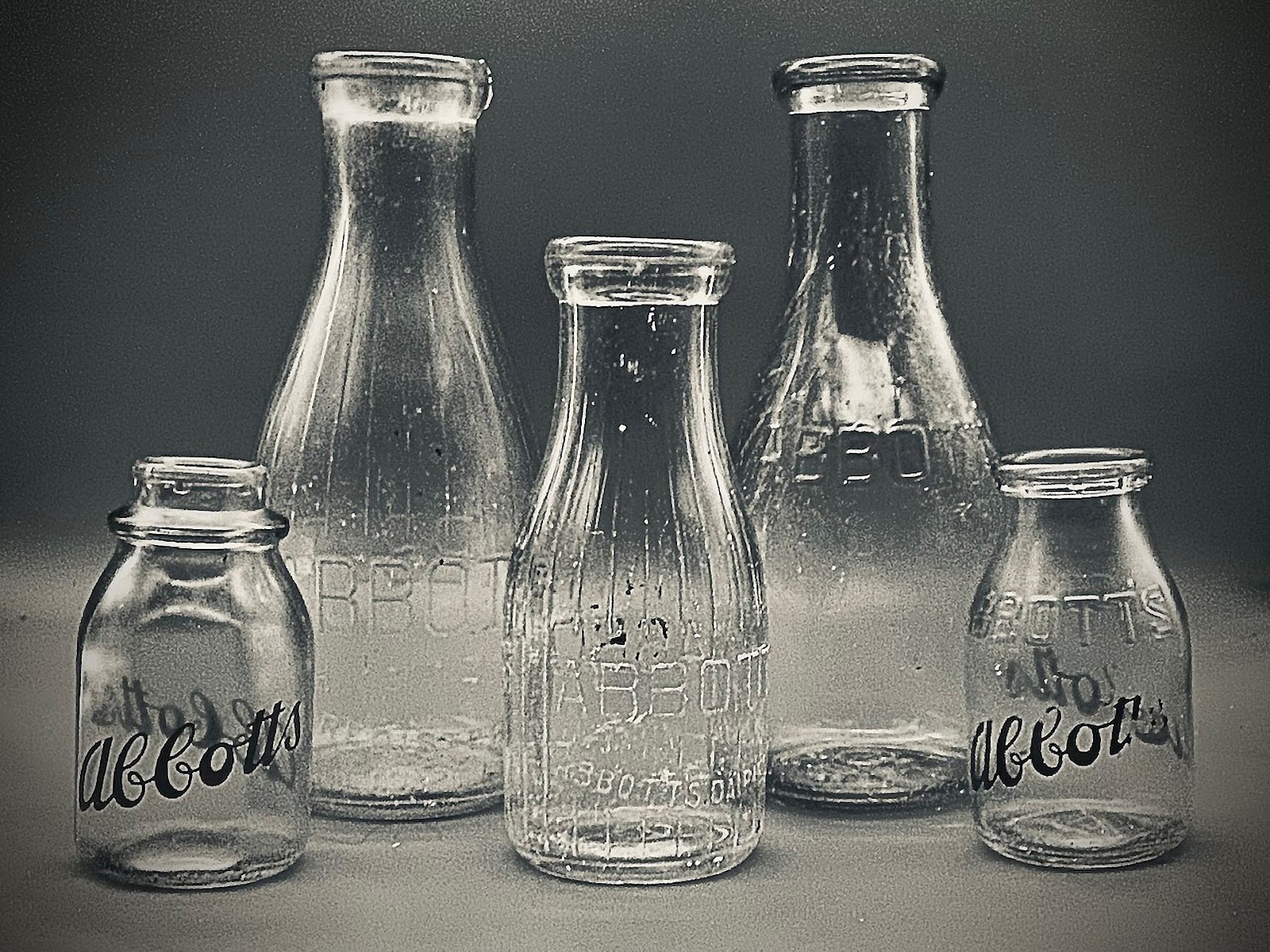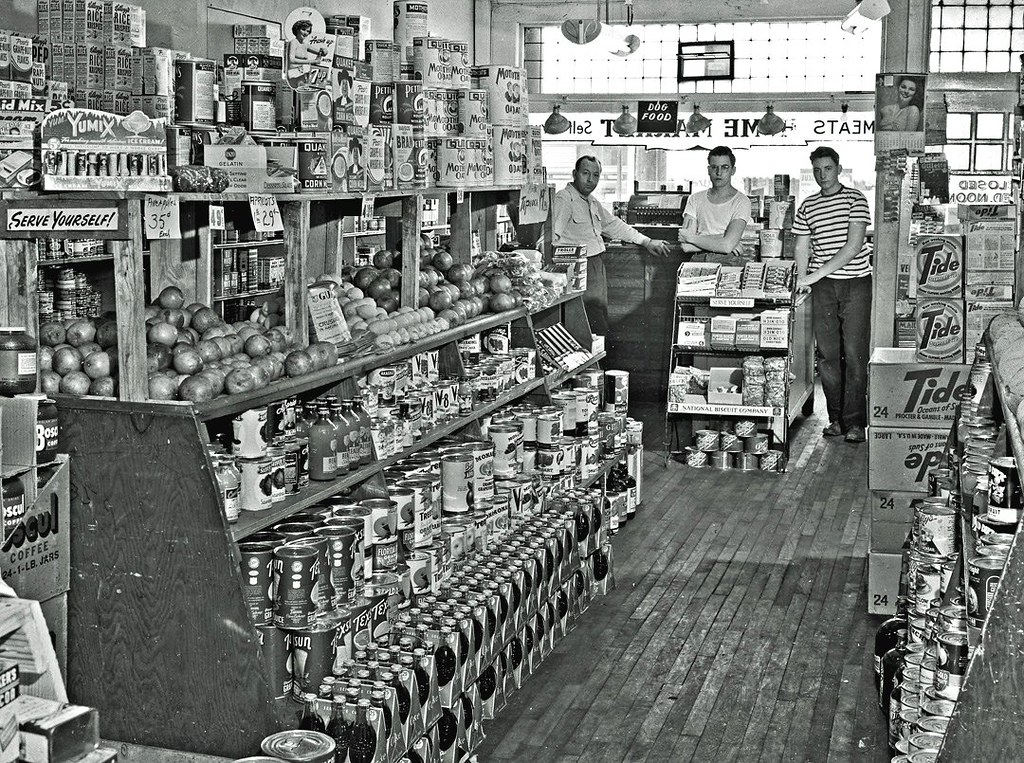
Bruce C. Cooper/Wikimedia Commons

Bruce C. Cooper/Wikimedia Commons
Less than 100 years ago, plastic was not a dominant material in human society, yet today its pollution is one of our most expansive, wicked environmental problems. Plastic dominates every part of society, from the grocery store to furniture, packaging, cars, children’s toys, and more. Its production continues to grow, as the American Chemistry Council cites that 8.1 billion pounds of plastic resin was produced in the United States just in January of 2023.
The resulting waste after plastic is used is a problem that is overwhelming and difficult to solve. In particular, non-point-source pollution of plastic into oceans that breaks down into microplastics that then enter the food chain, is a terrifying new reality for our planet. So, it is hard to believe that for some elderly people today, like my Grandmother Jane, born in 1930, the distant memories of a world without plastic do remain. I turn to Jane in my search for answers to the plastic problem.
When I spoke with Jane about the issue of plastic, our conversation began with a deep dive into how her family acquired groceries when she was a child. Jane grew up in Connecticut, and she told me, “I was 10… [when] they opened the first supermarket. Before that, my mother ordered her groceries over the phone.” Jane described a system where different products came from separate stores as opposed to one large hub of the supermarket. “The milk was delivered and left on your back porch every morning. We always thought it was a great thing, if it was cold enough, the milk froze. The milk was separated, it wasn’t homogenized the way it is now. So, we had cream floating on top… Then we’d spoon off some of this rich icy cream. It was a treat.”
Beyond the perk of this icy cream at a time before freezers and an endless supply of ice cream you could take home, was the lack of plastic waste in this milk delivery system. Jane explained, “[The milk] came in a glass bottle… The milk truck used to go by every single morning, early in the morning, and the milkman used to jump out with your three or four bottles or whatever you ordered, quart-sized bottles.” I responded asking her what happened to the bottles once her family drank all the milk. “Well, you’d wash them and then when the milkman delivered your new milk bottles filled with milk, he took the old ones away, and he sterilized them at the dairy, and you’d reuse them. Of course some of them got broken, but they were pretty tough glass, pretty thick and hard to break.”
I realize that what Jane detailed is a closed-loop system, where packaging does not have a single-use lifespan, but instead is reused over and over. While this precise system of a milkman might not be replicable everywhere in the United States, several organizations are endeavoring to popularize the practice once again, and the same concept could be applied with a system where people return glass bottles to the store themselves.
After Jane described these systems that were separate from the new concept of the supermarket, I asked her to describe what the packaging was like in grocery stores during her childhood. She said simply, “There wasn’t [packaging]. Everything was in bins. And you would go in and there would be a paper bag, and you would put what you wanted in a paper bag, and usually there was a scale so you could weigh it if you wanted to. But the customer did it themselves and took what they wanted. And you could pick it over; you didn’t get spoiled fruit or anything.”
Essentially, all grocery stores were set up the way that some farmer’s markets still are today. While today we also still do have sections of the grocery store with fruit and vegetables to pick on your own, they are placed in plastic bags, and berries, for example, always come in a plastic container. Jane told me that for those small fruits, they came in wooden boxes. She concluded, “In other words, everything was degradable.” The city she lived in Connecticut as a child even had a system where trash was divided between the edible and the inedible. “All the edible food had to be put in separately so it could be fed to the pigs.”

Part of what’s so fascinating about Jane’s accounts of the past are that she did not live in an “environmentalist” world. Our concepts of individual environmental accountability today, like bringing a reusable bag to the store, were not something people thought to do during her childhood and young adulthood in the 1940s and 1950s. Additionally, she told me that in her honest memory and experience, that while she became sensitive to concepts of environmental pollution after Rachel Carson’s A Silent Spring was published, she didn’t really become aware of global warming until much later, in the late 1990s when Al Gore was running for president. She recalled that in her social circles, “Nobody took Al Gore seriously, which is something I passionately regret. They really, really did not.”
So, how is it that today, where Yale Climate Opinion Maps from 2021 cite that 72% of Americans believe in climate change, that related environmental problems, such as plastic waste, are so much worse than they were during Jane’s childhood? How is it that we have gone from a significantly less wasteful society with no environmental concern, to a surplus of waste society where more than the majority of people are concerned about environmental problems like climate change?
The answer is that the system has fundamentally changed, from one where waste’s biodegradability was inevitable to one where long-lasting waste is impossible to avoid. Of course, the plastic industry itself drove this change, despite its initial slow start. Jane recalled that “The sort of bendable plastic, like what we would call plastic wrap was the first thing. That started sometime after the war. It just came into gradual use. It was nothing that was very sudden. Some places used it, and some places didn’t, and as time went by, more and more places used it, and at some point it became pretty standard that all your produce would be wrapped.”
Thus, our solutions to the plastic problem must be aimed at changing systems. Since plastic went from being unheard of to quickly taking over, our alternatives could do the same. We need to find new material industries that are biodegradable to take over the places where we rely on plastic, such as for preservation. At the same time, we need to re-introduce systems of the past of both reusability and minimal packaging where possible. Simply put, in Jane’s words: “We lived without all the plastic.”